MikroTik CRS320-8P-8B-4S+RM Internal Hardware Overview
Inside the switch, you can see that the two power supplies dominate the switch, but it is built a bit differently than other switches we have seen from MikroTik.
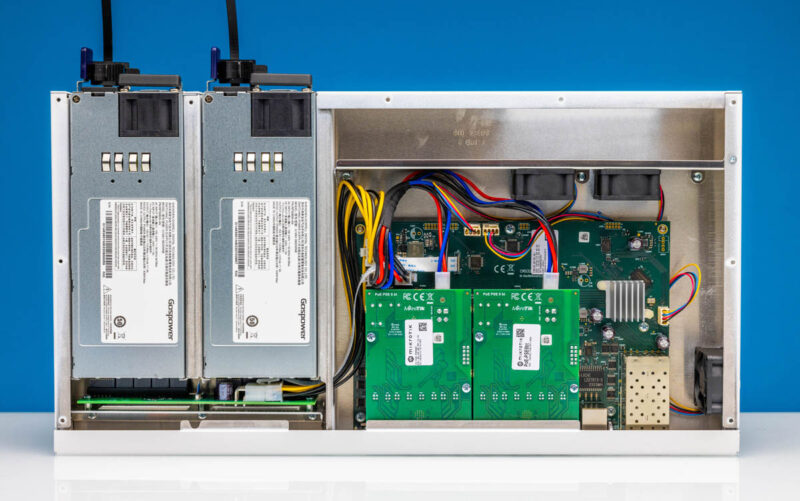
Here are the two Gospower 600W power supplies installed (again, the second is optional.)
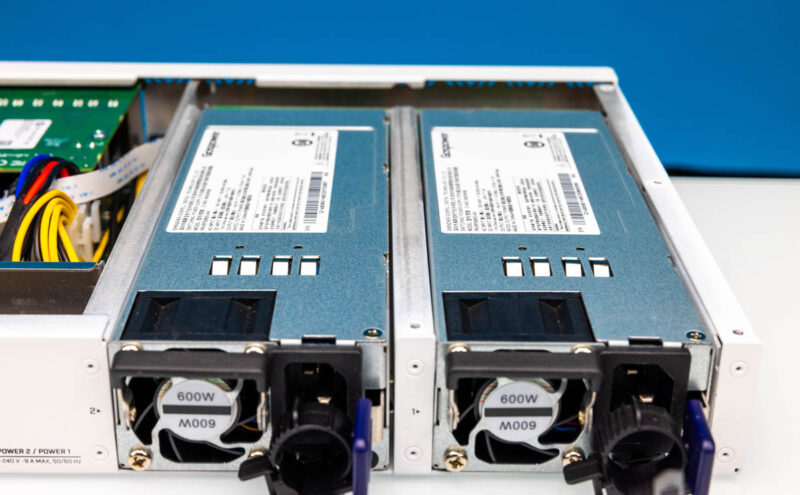
The power supplies connect to a vertical power distribution board in the chassis. That is a change from other MikroTik designs, as is the fact that each PSU does not have its own power cable to the main switch board.
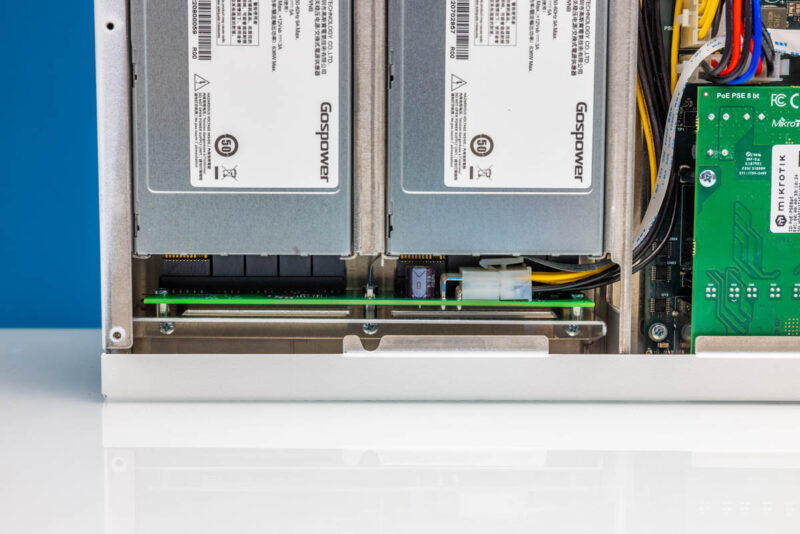
Looking at the fans, things are a bit strange. For example, we have one side fan that blows over the SFP+ cages, but not really with a direct path to the PoE boards or the switch chip.
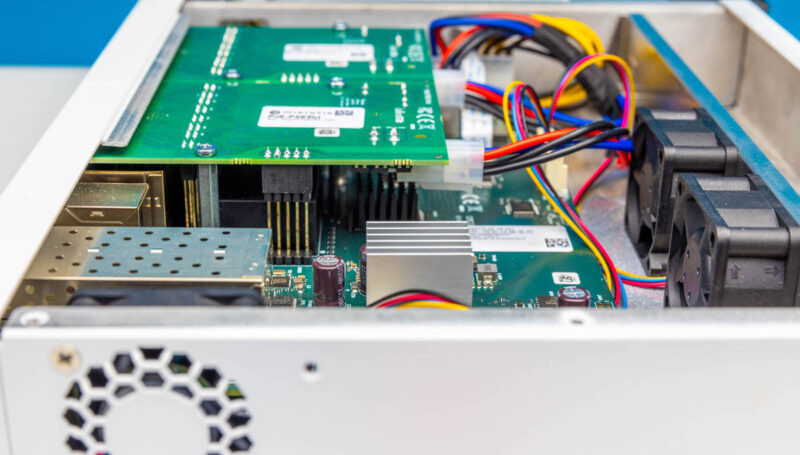
In the middle rear, we have two fans that cool the rest of the switch.
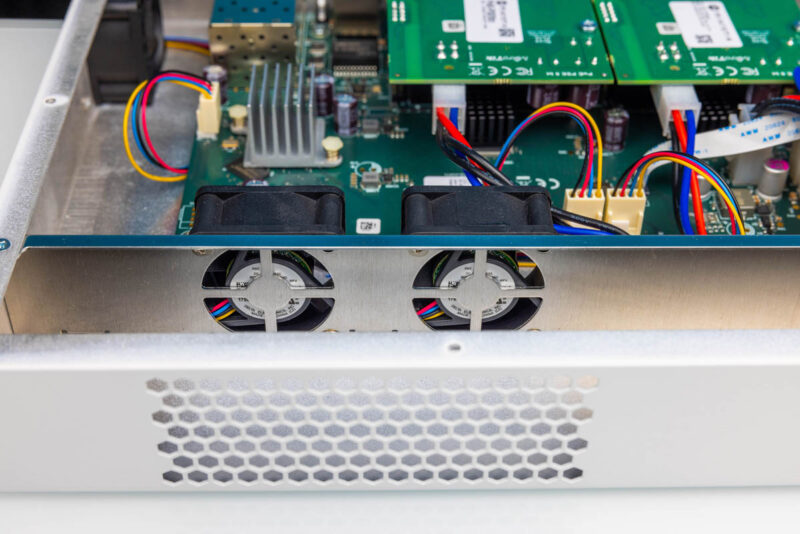
Here we can see the two cabled PoE boards.
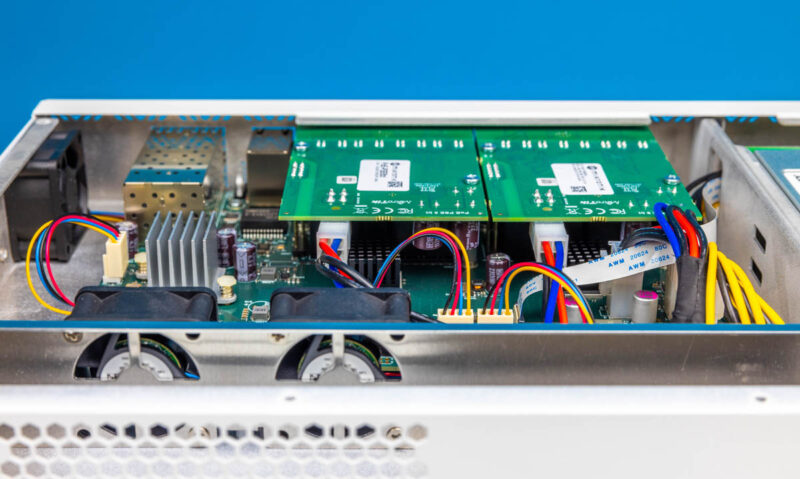
The boards may look similar, but if you see the labels, they are actually different. A part of us wonders why these are not both 802.3bt boards, although we would certainly want bigger power supplies with that.
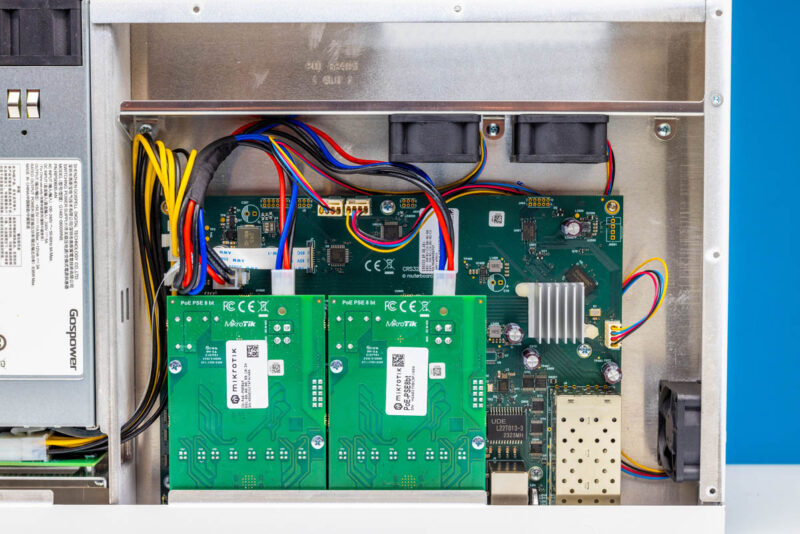
The switch chip is a Marvell Prestera 98DX226S.
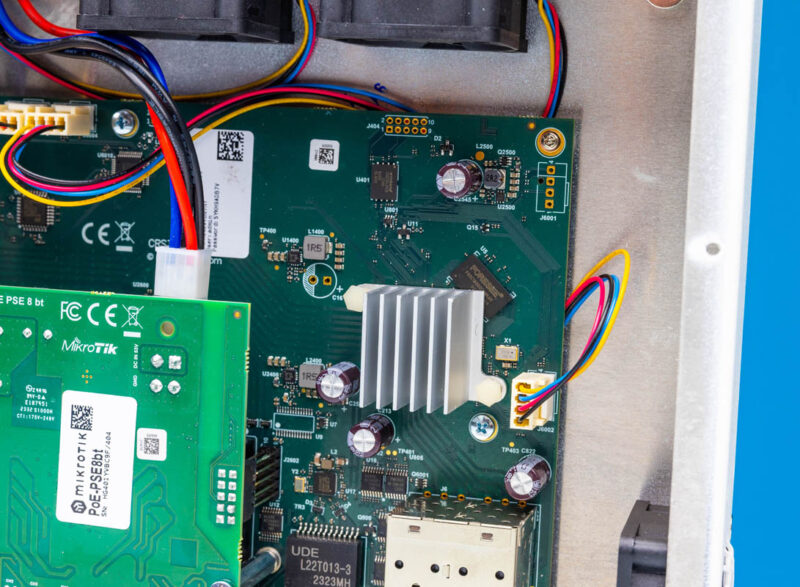
This has a dual-core 32-bit Arm management processor at 800MHz with 256MB of RAM. As a fun one, there is only 32MB of storage onboard, so this switch has 4x the RAM versus non-volatile storage.
Next, let us get to the management.

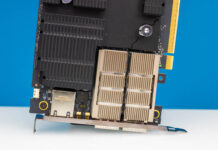
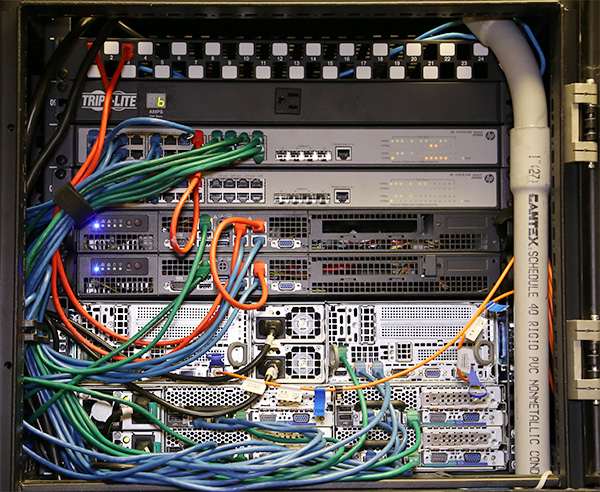
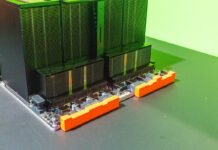
Still not 2,5Gbe or 5Gbe ethernet port, for new deployement with access point in 2,5Gbe it’s not usefull
How much, if any, control do you have over what ports get priority in the case of loss of one of two power supplies?
Obviously full redundancy is nicer, if you can justify the price; but for a lot of intermediate applications it seems like a relatively low risk of having to shed some of the load could be acceptable; but only if you can control what load gets shed.
If losing a PSU means that everything browns out and then renegotiates a more or less random(or at least unpredictable and uncontrollable) subset of the original devices depending on which ones reboot how quickly and how the chips fall then that makes losing one PSU potentially nearly as bad as just losing the switch(especially if you are taking advantage of Microtik’s taste for POE-powerable switches in the vicinity); but if you can set up a POE config for the lower budget and one for the higher budget and have losing one PSU just move you neatly from one to the other that would be something you could work with; especially given the fairly low failure rate of decent PSUs.
Why someone would make a POE++ switch to support Wifi6 and beyond, with only 1GbE ports is beyond me. I’d get one in a heartbeat if it had 2.5GbE ports (even when I do no like their OS).